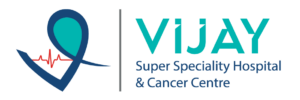
A heart attack can strike unexpectedly, but knowing the warning signs can make all the difference. This crucial guide will help you understand the signs and symptoms of a heart attack, ensuring you’re prepared to act quickly and effectively.
Recognizing the Early Signs: Your First Line of Defense
The key to surviving a heart attack is recognizing the warning signs as early as possible. Here’s what to watch for:
Chest Discomfort: Often described as pressure, squeezing, or pain in the center or left side of the chest. It may last for several minutes or go away and come back.
Pain in Other Areas: Discomfort might spread to the shoulders, neck, arms, or jaw. This pain can sometimes feel like a dull ache or sharp pang.
Shortness of Breath: This can occur with or without chest discomfort. It may feel like you can’t catch your breath even when you’re resting.
Other Symptoms: Cold sweat, nausea, dizziness, or sudden weakness. These symptoms might seem less severe but can be critical indicators.
Understanding Gender Differences: Heart Attacks Aren’t the Same for Everyone
It’s important to recognize that heart attack symptoms can differ between men and women:
Men: Commonly experience more intense chest pain and discomfort radiating to the arm or jaw.
Women: May have subtler symptoms such as fatigue, shortness of breath, or nausea. They might not always feel the classic chest pain but could experience unusual discomfort in the back or stomach.
Taking Immediate Action: What to Do When a Heart Attack Strikes
If you or someone you know is showing signs of a heart attack, quick action is vital:
Call Emergency Services: Immediately dial emergency services to get professional help on the way.
Chew Aspirin: If advised by a healthcare professional and if you’re not allergic, chewing aspirin can help reduce heart damage.
Perform CPR: If the person becomes unresponsive and you are trained, start CPR. It can keep blood circulating until medical help arrives.
Preventing Heart Attacks: Building a Heart-Healthy Lifestyle
Preventing a heart attack involves making heart-healthy choices every day:
Healthy Eating: Incorporate a balanced diet rich in fruits, vegetables, whole grains, and lean proteins. Avoid excessive salt, saturated fats, and processed foods.
Regular Exercise: Aim for at least 150 minutes of moderate aerobic activity each week. Activities like brisk walking, cycling, or swimming can keep your heart in top shape. Regular Checkups: Monitor your blood pressure, cholesterol levels, and overall heart health with regular checkups.
Building Support Systems: The Importance of Awareness and Education
Awareness and preparation are crucial in managing heart health. Educate yourself and your loved ones about heart attack symptoms and preventive measures. Share this information with family and friends, ensuring that everyone is informed and prepared.
Embrace Heart Health: Take Charge of Your Well-Being
By understanding the signs of a heart attack and adopting a heart-healthy lifestyle, you can make informed decisions and act swiftly in an emergency. Prioritize your heart health and stay vigilant to protect yourself and those around you.
